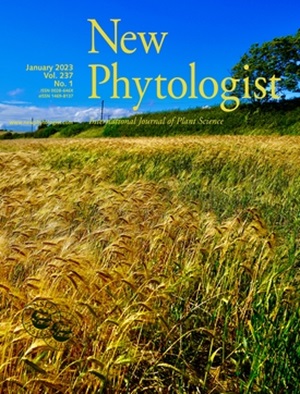Incorporating responses of traits to changing climates into species distribution models: a path forward
IF 8.1
1区 生物学
Q1 PLANT SCIENCES
引用次数: 0
Abstract
SummaryConventional species distribution models (SDMs) typically consider only abiotic factors, thus overlooking critical biotic dimensions, including traits that play an important role in determining species' distributions in changing environments. Process‐based trait SDMs explicitly incorporate traits and have been applied to SDMs. However, their parameterization can be complex and require data that are unavailable for most species. Recently developed hierarchical trait‐based SDMs use widely available data and facilitate the incorporation of traits into SDMs at broad temporal, spatial, and taxonomic scales. However, despite their promise, existing hierarchical trait‐based SDMs fail to accommodate changing trait spaces under different climate conditions. Here, we provide a new, simplified framework for hierarchical trait‐based SDMs that integrates individuals' trait responses into forecasts of species range shifts in response to ongoing climate changes. We further briefly discuss the issue of non‐independence among species in hierarchical trait‐based SDMs. This work will contribute to an improved understanding of how traits affect species distributions along environmental and temporal gradients and facilitate the application of trait‐based SDMs at large scales under future climate change.将性状对气候变化的反应纳入物种分布模型:一条前进的道路
传统的物种分布模型(SDMs)通常只考虑非生物因素,从而忽略了关键的生物维度,包括在变化环境中决定物种分布的重要特征。基于过程的特征sdm明确地包含了特征,并已应用于sdm。然而,它们的参数化可能很复杂,并且需要大多数物种无法获得的数据。最近发展起来的基于层次特征的sdm使用了广泛可用的数据,并促进了在广泛的时间、空间和分类尺度上将特征纳入sdm。然而,尽管它们有希望,现有的基于分层特征的sdm不能适应不同气候条件下不断变化的特征空间。在这里,我们提供了一个新的、简化的基于分层特征的sdm框架,该框架将个体的特征反应整合到物种范围变化的预测中,以响应持续的气候变化。我们进一步简要讨论了基于等级特征的SDMs中物种间的非独立性问题。这项工作将有助于更好地理解性状如何影响物种沿环境和时间梯度的分布,并促进在未来气候变化下基于性状的sdm在大尺度上的应用。
本文章由计算机程序翻译,如有差异,请以英文原文为准。
求助全文
约1分钟内获得全文
求助全文
来源期刊

New Phytologist
生物-植物科学
自引率
5.30%
发文量
728
期刊介绍:
New Phytologist is an international electronic journal published 24 times a year. It is owned by the New Phytologist Foundation, a non-profit-making charitable organization dedicated to promoting plant science. The journal publishes excellent, novel, rigorous, and timely research and scholarship in plant science and its applications. The articles cover topics in five sections: Physiology & Development, Environment, Interaction, Evolution, and Transformative Plant Biotechnology. These sections encompass intracellular processes, global environmental change, and encourage cross-disciplinary approaches. The journal recognizes the use of techniques from molecular and cell biology, functional genomics, modeling, and system-based approaches in plant science. Abstracting and Indexing Information for New Phytologist includes Academic Search, AgBiotech News & Information, Agroforestry Abstracts, Biochemistry & Biophysics Citation Index, Botanical Pesticides, CAB Abstracts®, Environment Index, Global Health, and Plant Breeding Abstracts, and others.
 求助内容:
求助内容: 应助结果提醒方式:
应助结果提醒方式:


